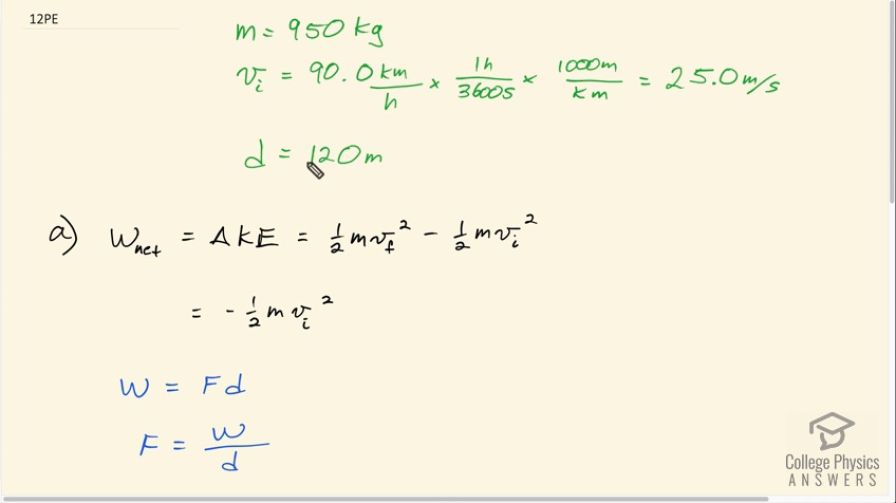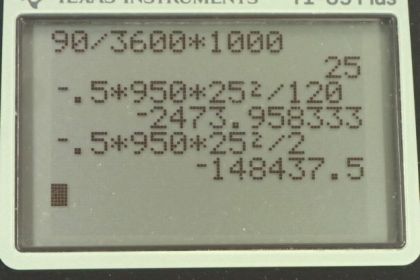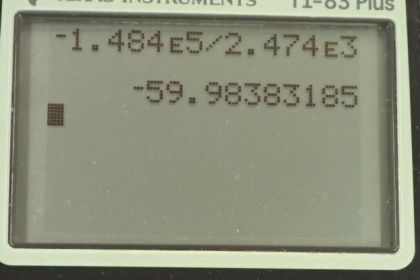Question
(a) Calculate the force needed to bring a 950-kg car to rest from a speed of 90.0 km/h in a distance of 120 m (a fairly typical distance for a non-panic stop). (b) Suppose instead the car hits a concrete abutment at full speed and is brought to a stop in 2.00 m. Calculate the force exerted on the car and compare it with the force found in part (a).
Final Answer
- . The force when hitting the concrete abutment is greater by a factor of
Solution video
OpenStax College Physics for AP® Courses, Chapter 7, Problem 12 (Problems & Exercises)

vote with a rating of
votes with an average rating of
.
Calculator Screenshots
Video Transcript
This is College Physics Answers with Shaun Dychko. We're going to calculate the force needed to bring a 950 kilogram car to a stop over a distance of 120 meters, assuming an initial velocity of 90 kilometers per hour. When I'm writing down all the stuff we know, I usually take this as an opportunity to convert units into MKS units, meters, kilograms, and seconds, because this is the type of unit we'll need in our formula. Let's take this 90 kilometers per hour and turn it into meters per second, by multiplying by one hour for every 3600 seconds, and then multiplying by 1000 meters for every kilometer, leaving us with meters per second. That is 25.0 meters per second. We could use this information and use our kinematics formula to figure out acceleration and then say that the net force is mass times acceleration and then divide both sides by m, that would be fine. But because this is an energy chapter, I'm going to use the energy concepts to answer this question and so I'll say that the network done is the change in kinetic energy. Since the final velocity is zero, it means we can write this as negative one-half mV i squared. The network is going to be the net force times the displacement. But there's only one force here. It's redundant to say net we can just say W because we assume that there's no friction on this car and its free body diagram, horizontally speaking, would just be this force applied to stop it when it has some initially forwards velocity like that. The normal force and the gravity which are also on this car are perpendicular to the displacement and so they do not work at all. Force then is the work divided by the distance here. I labeled this number one because we're asked in part B to compare the force in this scenario with the force when it stops in a distance of 2 meters and so I put a one here. It's going to be one-half m V i squared, that's the work done, divided by the distance, that's negative a half times 950 kilograms, times 25 meters per second initial speed squared divided by 120 meters, which is negative 2.47 times 10 to the 3 newtons. You don't really need this negative here. It's just to say that the direction of the force applied is opposite to the initially positive velocity. In the second case, if the car hits a concrete abutment and stops in the distance of only 2 meters, what would the force be? That's negative a half times 950 kilograms times 25 meters per second squared over 2 meters, and that's negative 1.48 times 10 to the 5 newtons. These two forces differ by a factor of 60. The force applied on the car by the concrete is going to be 60 times that of the force applied, presumably by the brakes when it stopped in the distance of 120 meters originally.

